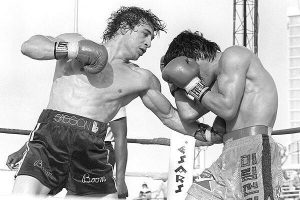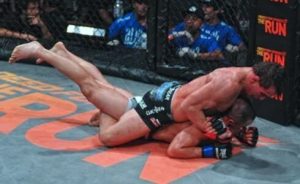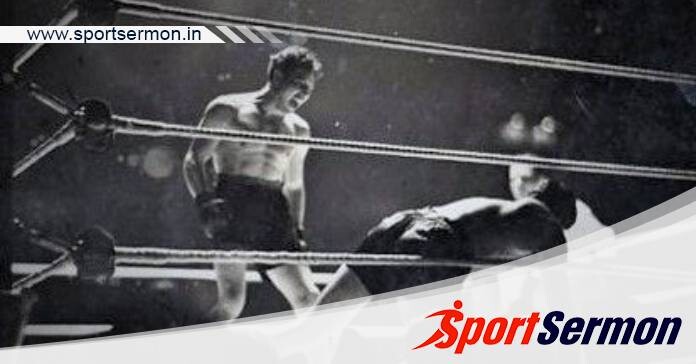MMA is the hardest sport: Every sport is different and has varying degrees of difficulty and obstacles. It takes a great deal of work, commitment, and sacrifice to succeed or master the one. In sports like football or basketball, there is never an easy way out.
But most people don’t realise how hard mixed martial arts fighting is. Furthermore, some believe that mixed martial arts (MMA) is a lesser sport than others. This is untrue because mixed martial arts (MMA) is arguably the hardest sport in the world. The majority of people do not view things this way because they are unaware of the requirements to become an MMA fighter.
Reasons why MMA is the hardest sport:
10. Fighters Cut A Lot Of Weight:

Before the weigh-in, many mixed martial arts fighters drastically reduced their weight in order to be qualified for their respective weight classes. One of the most difficult non-fighting sections of the MMA game is this one. Furthermore, losing weight is often more difficult for fighters than the actual fighting.
Most of the top global promotions, such as the UFC, use an eight-division weight structure. The weight differences among the divisions range from 15 to 20 pounds. Because of this, a lot of fighters are going through extreme hardships in order to drastically reduce their weight and compete in a lower division than they would naturally be in.
Fighters refrain from consuming carbohydrates, fruit, sugar, or starches one week prior to a fight. In an attempt to shed pounds as quickly as possible, they are also dehydrating themselves.
Fighters can consequently shed an incredible 20–30 pounds in a single week. But drastic weight loss is a huge shock to the body and psyche of a fighter. Everyone has seen the well-known video of Cris Cyborg crying, screaming, and losing consciousness while trying to lose weight.
Extreme weight loss frequently has fatal results and other negative effects! We all recall the potentially fatal outcomes that UFC champion Khabib Nurmagomedov faced following the severe weight reduction prior to UFC 209. Definitely one of the hardest things about MMA is the weight-cutting alone.
9. Quick Decisions In A Split Second:

A match of human chess is an MMA fight. Combatants constantly read each other’s body language and adjust to a wide range of unforeseen circumstances. If an opponent changes tactics in the middle of the fight, the fighter must quickly adjust to the new situation and counter with maximum effectiveness.
Given that everything happens in an instant, a fighter needs to be able to judge when to strike or retreat. Concentration and quick thinking are essential because one mistake can lead to a devastating knockout.
It’s easier said than done, though. It takes a special kind of mind to focus on a fight when millions of people are watching the fight at home and thousands of people are cheering inside the arena. This only proves, MMA is the hardest sport.
Furthermore, when a fight is not going your way, things become even more challenging. It’s easy to slip into a panic or survival mode when you’re breathing heavily and your back is against the cage. Quick thinking, problem-solving, and the ability to quickly overcome these challenging situations are what separate successful fighters from average ones.
8. Requires A High Level Of Conditioning:

In mixed martial arts, endurance is a fighter’s mainstay. Being able to maintain high levels of strength and energy for extended periods of time is just as important as having exceptional striking or grappling skills. Furthermore, being extremely well-conditioned can significantly alter a fight.
A fighter must expend a great deal of energy to move continuously and alternate between grappling wrestling, and striking exchanges. The body will begin to rapidly lose oxygen from it as soon as the first exchange occurs. Fighters with poor endurance will consequently begin to slow down and lose more likely to prevail.
Players in football or basketball can ask for a substitution or call a timeout when they become tired. There are no such things in mixed martial arts; you either survive to finish a fight or not.
We’ve seen elite-level fighters gas out in the first few minutes of a fight and then be left for dead by their lack of endurance on multiple occasions. Furthermore, the opponent with superior conditioning but less skill frequently overwhelms these fighters. Prominent UFC fighters like Tony Ferguson, Max Holloway, and Nate Diaz have built their careers on top conditioning.
But strengthening your conditioning is a very difficult task that requires a great deal of commitment and pushing your body and mind beyond sustainable limits. Fighters put in many hours working out with jump ropes, swimming, running in high altitudes, and other activities.
7. MMA Requires Durability:

The world’s toughest athletes are most likely mixed martial arts competitors. Seeing them take a clean headkick and keep moving forward is always fascinating. Fighters in mixed martial arts (MMA) must be able to withstand strikes in order to continue fighting. A fighter who lacks it will give up after the first blow.
A full-force blow to the head upsets our equilibrium and causes us to become lost. In addition, you might remember that the fighter’s legs gave up first if there was a knockout. Occasionally, the combatant collapses instantly or performs a “chicken dance,” as demonstrated by Kevin Lee against Edson Barboza.
Fighters are concentrating on strengthening the neck muscle groups through a variety of exercises in order to increase durability. In the history of combat sports, Tito Ortiz, the former UFC champion, is most likely the person with the largest neck. If you have a thick neck like Tito, you won’t snap your head back violently after getting shot, and your brain won’t move all over your skull.
In actuality, not everyone has the ability to take a punch or grow accustomed to taking blows frequently. Some fighters, like Mark Hunt, are just built to take more punishment than others.
Many fighters intentionally take body and head blows in an attempt to increase their durability. But there is no medical proof that this is effective. Furthermore, despite the assertions of numerous experts, there are no precise ways to increase durability.
Strong physical characteristics and mental toughness are also irrelevant in this situation. The truth is that not everyone is strong enough to withstand a blow, and this has led to the failure of many MMA careers. Having said that, one of the main reasons mixed martial arts (MMA) is so challenging and not suitable for everyone is durability.
6. A background in discipline:

You must have a solid foundation in at least one fighting discipline if you want to be successful in mixed martial arts. Most of the best fighters and winners in mixed martial arts (MMA) were already highly skilled athletes in other martial arts.
Pro fighters such as Henry Cejudo and Daniel Cormier, for instance, have a strong background in Olympic wrestling. Furthermore, before turning to mixed martial arts (MMA), rising star Israel Adesanya won multiple kickboxing titles. Damien Maia is among the most skilled BJJ grapplers outside of the octagon.
Fighters learn and add skills around their strongest skill set after they have their core skills mastered, allowing them to make the most use of their primary skills. In this manner, a fighter with a solid base can neutralise the strongest move of their adversary. Fighters with a history in combat sports also retain the ability to pick up new skills far more quickly.
Without a strong martial arts background of some kind, it is nearly impossible to achieve high success in mixed martial arts. Almost all fighters have fought before, so it takes a special kind of talent to pick up all the styles fast enough to be competitive.
5. You Can Get Seriously Injured:

In mixed martial arts (MMA), there are numerous methods to end a match, unlike in other combat sports like boxing or kickboxing. Any athlete can execute vicious strikes and submissions in this sport, which can lead to horrifying injuries. The most lethal Muay Thai style has been identified over time.
A Muay Thai fighter might, for instance, forcefully press you up against the cage and begin striking your face with vicious knees and elbows. Serious injuries like concussions and deep lacerations may result from this. Furthermore, terrible things could happen if the flying knee lands correctly.
In reference to knees and their outcomes, witness the vicious flying knee that Michael “Venom” Page delivered to Evangelista dos Santos at Bellator 158. Santos was taken out of the Octagon and placed directly onto the operating table after a blow fractured his skull. We all recall the enormous amount of blood that was lost from Chris Weidman’s skull following Yoel Romero’s infamous flying knee landing.
These sequences may not be glamorous, but they make up the majority of MMA fights. You have to come to terms with the fact that you will eventually get major injuries from training and combat.
4. Fighters Must Be Mentally Tough:

Probably the most important tool for any MMA fighter is mental toughness. Experts suggest that fighting is 90% mental and 10% physical, despite the fact that this is frequently disregarded. In essence, even if you possess all the skills in the world, your ability to perform in a fight can be adversely affected by your inability to control your emotions and maintain focus.
In mixed martial arts (MMA), fighters compete individually and must overcome all pressure, anxieties, and stress. Players in football and basketball are able to assign blame and shame to one another. You are on your own to handle this in MMA. A fighter must have a strong heart and steely nerves to handle the psychological pressure of opponents.
While they may appear assured in the media build-up to a fight, fighters actually experience “fight anxiety.” There will be intense mental pressure to fight when you’re imprisoned in a cage with a man who wants to sever your head. The primary explanation for why “not everyone can compete in MMA” is this. Most of us have an innate fear of getting seriously hurt, so our first reaction to any physical conflict is to flee.
Furthermore, a person’s performance in a fight will be immediately impacted by fight anxiety. This usually causes the heart rate to rise and the body to pump more oxygen. Consequently, a fighter will quickly run out of gas, and your mind will go into panic mode. Fighters need to be mentally tough to stop this from happening.
3. Master Multiple Fighting Styles:

Nearly all of the world’s hand-to-hand combat sports are included in MMA. It’s extremely difficult to train for and become proficient in just one fighting discipline; it’s unthinkable to reach the same levels in multiple combat sports. However, an athlete needs to be well-versed in a variety of martial arts in order to succeed in mixed martial arts.
Additionally, a fighter must execute this fusion of styles harmoniously. Having said that, it should come as no surprise to learn that MMA fighters are some of the world’s most exceptional and gifted athletes.
In addition, you have to get ready for every fighting situation that might arise. The one-dimensional strategy is ineffective in mixed martial arts (MMA), whether it is used in grappling exchanges on the mat or on the feet in Muay Thai. Even though you’re a great kickboxer, you still need to learn defensive wrestling and jiu-jitsu techniques.
The same holds true for a wrestler whom the Muay Thai fighter can destroy on the ground. Having a narrow skill set will eventually catch up with you, regardless of how good you are at one.
To compete inside the cage, mixed martial arts fighters need to master a variety of styles and be ready for any eventuality. They typically devote one week to learning the following styles:
- Wrestling
- Muay Thai
- Brazilian Jiu-Jitsu
- Boxing
2. Dynamics Of MMA Techniques:

Since MMA is still a young sport, fighting styles are always changing. As previously mentioned, in order to compete in the cage, fighters must master a variety of fighting techniques. However, one needs to keep learning new skills that other fighters employ.
MMA is a dynamic sport that is always changing, in contrast to other sports like boxing. Each year, emerging talents such as Israel Adesanya and Yair Rodriguez introduce fresh aspects of grappling and striking techniques. A fighter needs to be able to quickly incorporate new techniques into their game and keep up with trends in order to stay competitive.
In MMA, there’s really no such thing as mastery. Fighting mixed martial arts requires constant learning. It makes sense that new methods emerge from the development of training systems. This implies that you will need to invest more time and effort than usual in the gym.
The truth is that a fighter’s skills from today might not be as useful tomorrow. In order to use new skills inside the cage, a fighter needs to be flexible and willing to learn them.
1. Possible Permanent Injuries:

Proving that MMA is the hardest sport, MMA fighters endure extreme physical and mental strain throughout their careers, which can lead to injuries. Numerous chronic injuries and illnesses can result from knockouts and broken bones during sparring and fights.
According to a 2014 study, there are more knockouts and stoppages in mixed martial arts (MMA) than in other combat sports. Additionally, compared to younger fighters, fighters between the ages of 36 and 40 are knocked out more frequently.
These studies collectively demonstrate that the body and brain gradually lose faith in the fighter over time. Furthermore, a number of additional studies, including one released by the “International Environmental Research and Public Health Institute,” indicate that MMA poses a risk of developing Chronic Traumatic Encephalopathy (CTE).
The “American Academy of Neurology” looked into the relationship between the length of a fighter’s career and the emergence of brain damage in 2013. The findings demonstrated that fighters with more than five years of MMA experience would lose important brain function, which would impair their memory and learning capacity.
So, this was all about the reasons why MMA is the hardest sport. Also read, Top 7 famous atheist football players.

